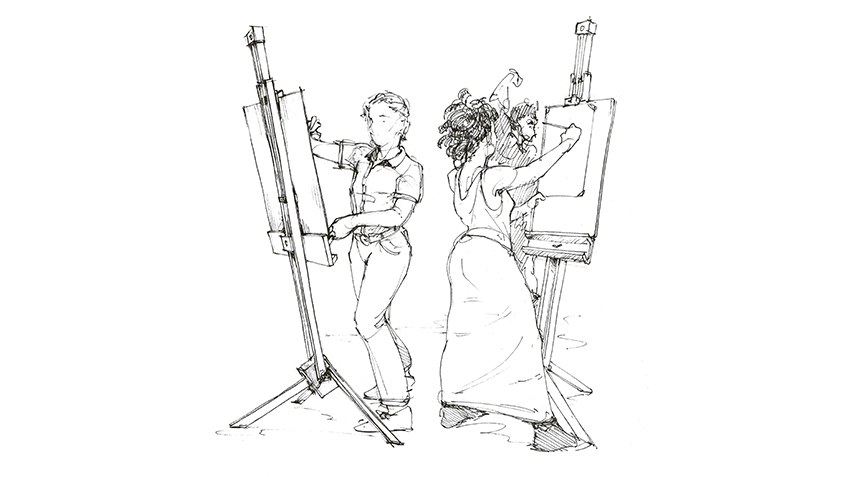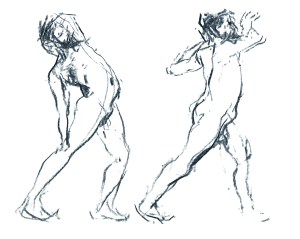LEARNING TO DRAW THE FIGURE

Why attitude matters
Drawing is not an innate ability; like all skills it is developed through practice. Anybody with a will to draw can learn to draw better and over time, practice will always take you further than natural talent alone. Learning to draw is like climbing a hill – at the start, you might chart your destination on a map, but all you can really see is the top of the rise ahead of you. Along the way you might find yourself meandering along paths that you hadn’t seen from the foot of the hill; the journey is never quite the one you expected to take. On reaching the top and seeing the vista in front of you, your initial goal will have become just the first point of a much greater exploration. You might take up drawing in order to achieve a likeness in a portrait or to learn to draw convincing figures from life, but once you’ve started climbing – once you dedicate regular time to drawing – you will find yourself developing new intentions that you could not have anticipated when you first began. There are no fixed rules for learning to draw well, but there are attitudes that will help you to put your own development in context at different stages.
At the start
Drawing is a visual language and your life drawings are rooted in observations of the figure, so the first lessons you learn will be lessons of looking. Even if you don’t ultimately intend to make visually accurate drawings, a rigorous observational foundation will train you to see your subject clearly. Start by repeating simple exercises, keep to a limited range of drawing materials and don’t put pressure on yourself to create any finished outcomes.
Use these principles to help you:
Hours not years. The speed of improvement is relative to the hours you put in, not the months or years since you started. If you spend three hours a week drawing and your friend does the same for one hour, then after a year of practice you will be two years ahead of them.
- Start simple, repeat what works. Find exercises you enjoy and repeat them again and again.
- Manageable goals, regular application. Set yourself goals to draw for a certain number of hours every week. Make drawing your way of interacting with and exploring the world around you.
- Find a community. Learning alongside other people is critical for support and inspiration. Draw with your friends, start attending a life class or join an online community.
- Learn to enjoy learning. Enjoy the exercises and processes for the experience rather than the final outcome.
Mini exercises to warm up
Intended as a warm-up to a session or tools for breaking habits. They are as useful to established artists as they are to beginners and have been staples of experimental life drawing for over a century
Extending the reach of the arm

Thomas Gainsborough painted with 6ft-long brushes, Henri Matisse drew eloquent line drawings with charcoal tied to a long stick and Rebecca Horn drew with a mask of pencils. Extending the natural drawing range of your body is an established part of historical and contemporary practice. This exercise will encourage you to exchange tight control of your media for more playful and expressive marks by extending the range of your mark-making; you will need plenty of space for this exercise. Tape paper to the floor or a well-secured easel and attach a thick stick of charcoal to the end of a long, lightweight stick. Make your drawings at the length of the extended cane, using your body to direct the strokes.
Extracted from FIGURE DRAWING by Jake Spicer


